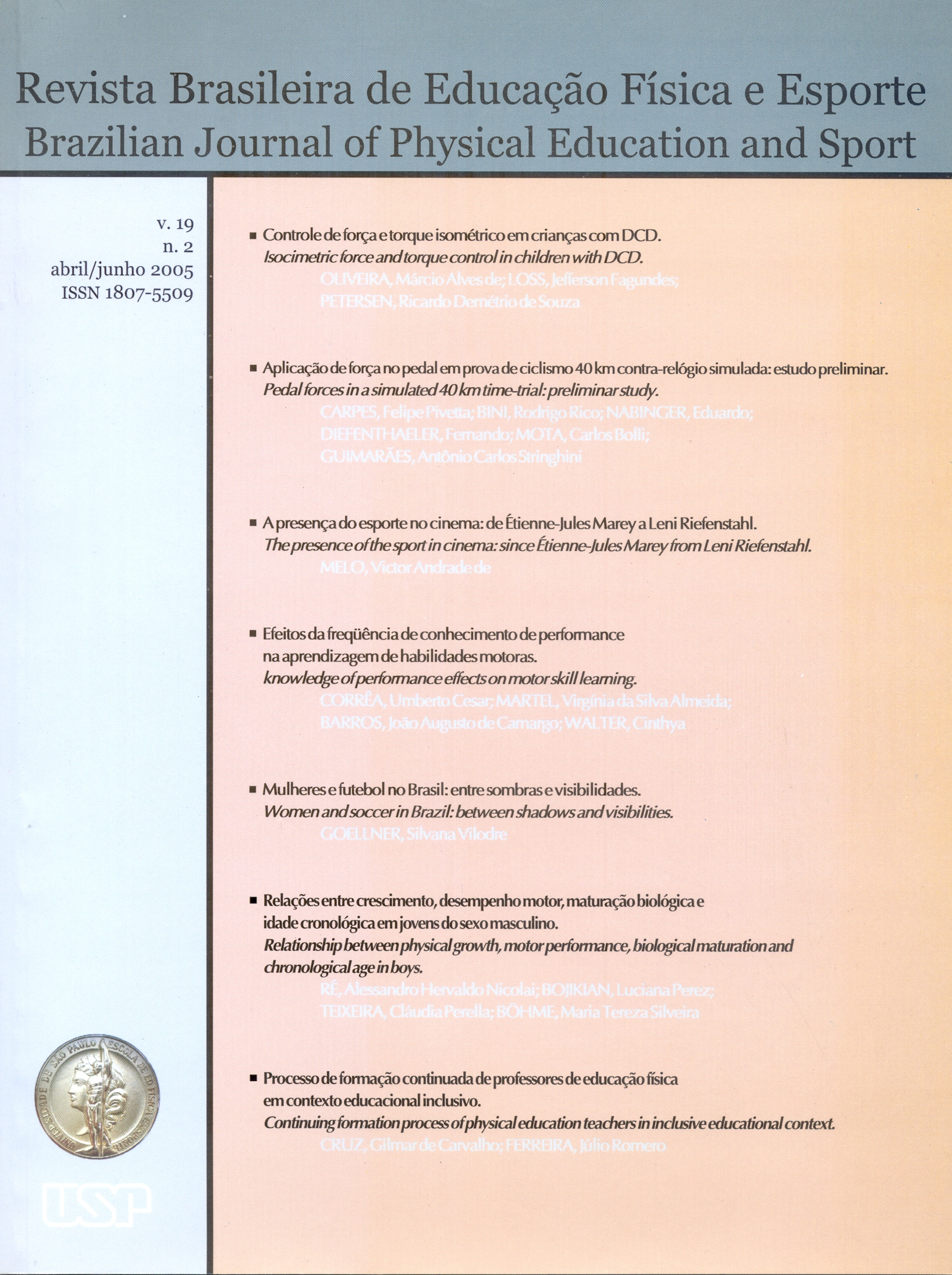Relationship between physical growth, motor performance, biological maturation and chronological age in boys
DOI:
https://doi.org/10.1590/S1807-55092005000200006Keywords:
Motor performance, Children and adolescents, Physical growth, Chronological age, Biological maturationAbstract
The purposes of this study were: a) to compare the motor performance and anthropometric characteristics of youngsters with different maturation stages in specific age ranges (10-11, 12, 13, 14, 15-16 years); b) in the age range of 10 to 16 years, to verify the relative grouped contribution of anthropometric characteristics, biological age (pubic hair stage), chronological age and motor performance measures, in the results of the SEMO's test (agility), standing long jump and 30 m run (velocity). The sample was composed of 268 boys participants of a sport initiation program, with ages between 10 to 16 years (M = 13,6; SD = 1,53). The knowledge of the youth's maturacional status had no interference on performance variability explanation in the motor tests. In conclusion, boys with similar age range and advanced maturation status, showed a tendency to have a bigger body mass and to be higher than their peers, but significant differences were not found in most comparisons of motor performance variables in the different groups considered.Downloads
Download data is not yet available.
Downloads
Published
2005-06-01
Issue
Section
naodefinida
License
Todo o conteúdo da revista, exceto onde está identificado, está licenciado sob uma Licença Creative Commons (CC-BY)
How to Cite
Bojikian, L. P., Teixeira, C. P., Böhme, M. T. S., & Ré, A. H. N. (2005). Relationship between physical growth, motor performance, biological maturation and chronological age in boys . Brazilian Journal of Physical Education and Sport, 19(2), 153-162. https://doi.org/10.1590/S1807-55092005000200006


